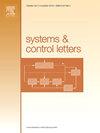一种基于深度强化学习的反馈控制新方法
IF 2.1
3区 计算机科学
Q3 AUTOMATION & CONTROL SYSTEMS
引用次数: 0
摘要
我们通过利用深度强化学习(RL)的力量提出了一种新的反馈控制设计方法。目标是将强化学习方法与数学分析相结合,以提取系统的显式反馈控制,其中由于约束或有限的测量,控制理论的经典方法(例如动态规划,基于最优控制的反馈,退步等)不能使用。我们利用昆虫不育技术(Sterile Insect Technique, SIT)研究了蚊子种群的动态系统,该技术是一种传统上应用于农业的方法,涉及将大量不育昆虫释放到野外以减少害虫种群。我们的目标是推导出一种反馈控制,仅使用实际测量,例如雄性和雌性蚊子总数,而不是通常无法获得的绝育雄性与有效雄性或繁殖力与未繁殖力的雌性的详细计数,就能在零蚊子平衡周围全局稳定系统。这种物理约束对经典方法控制理论提出了挑战,因为不能测量完整的状态。为了解决这个问题,我们应用深度强化学习来建议一个离散系统的反馈定律,这个系统只依赖于这些可访问的、现实世界的测量,可以通过信息素陷阱等方法获得。最后,我们利用训练好的神经网络提取显式反馈控制,在大范围的初始条件下稳定原始连续系统。实际应用中产生的许多其他动力系统受到测量约束,这使得从数学角度来看稳定问题变得复杂。我们认为,这种做法有助于找到解决这些问题的新办法。本文章由计算机程序翻译,如有差异,请以英文原文为准。
A novel approach to feedback control with deep reinforcement learning
We present a novel approach to feedback control design by leveraging the power of deep reinforcement learning (RL). The goal is to blend the RL methodology with mathematical analysis to extract an explicit feedback control for systems where, because of constraints or limited measurements, the classical approaches of control theory (e.g. dynamical programming, optimal control-based feedback, backstepping, etc.) cannot be used.
We study a dynamical system of mosquito populations for biological pest control using the Sterile Insect Technique (SIT), a method traditionally applied in agriculture that involves releasing large numbers of sterile insects into the wild to reduce pest populations. Our goal is to derive a feedback control that globally stabilizes the system around the zero-mosquito equilibrium using only practical measurements, such as total male and female mosquito counts, rather than detailed counts of sterilized versus potent males or fecund versus unfecund females, which are often not accessible. This physical constraint presents challenges for classical methods control theory, as the full state cannot be measured. To address this, we apply deep reinforcement learning to suggest feedback laws for a discretized system that only rely on these accessible, real-world measurements, obtainable through methods like pheromone traps. Finally, we leverage the trained neural network to extract explicit feedback controls that stabilize the original continuous system over a wide range of initial conditions.
Many other dynamical systems arising from practical applications are subject to measurement constraints, which render the stabilization problem complex from a mathematical perspective. We believe that this approach could help in finding new solutions to these problems.
求助全文
通过发布文献求助,成功后即可免费获取论文全文。
去求助
来源期刊

Systems & Control Letters
工程技术-运筹学与管理科学
CiteScore
4.60
自引率
3.80%
发文量
144
审稿时长
6 months
期刊介绍:
Founded in 1981 by two of the pre-eminent control theorists, Roger Brockett and Jan Willems, Systems & Control Letters is one of the leading journals in the field of control theory. The aim of the journal is to allow dissemination of relatively concise but highly original contributions whose high initial quality enables a relatively rapid review process. All aspects of the fields of systems and control are covered, especially mathematically-oriented and theoretical papers that have a clear relevance to engineering, physical and biological sciences, and even economics. Application-oriented papers with sophisticated and rigorous mathematical elements are also welcome.
 求助内容:
求助内容: 应助结果提醒方式:
应助结果提醒方式:


